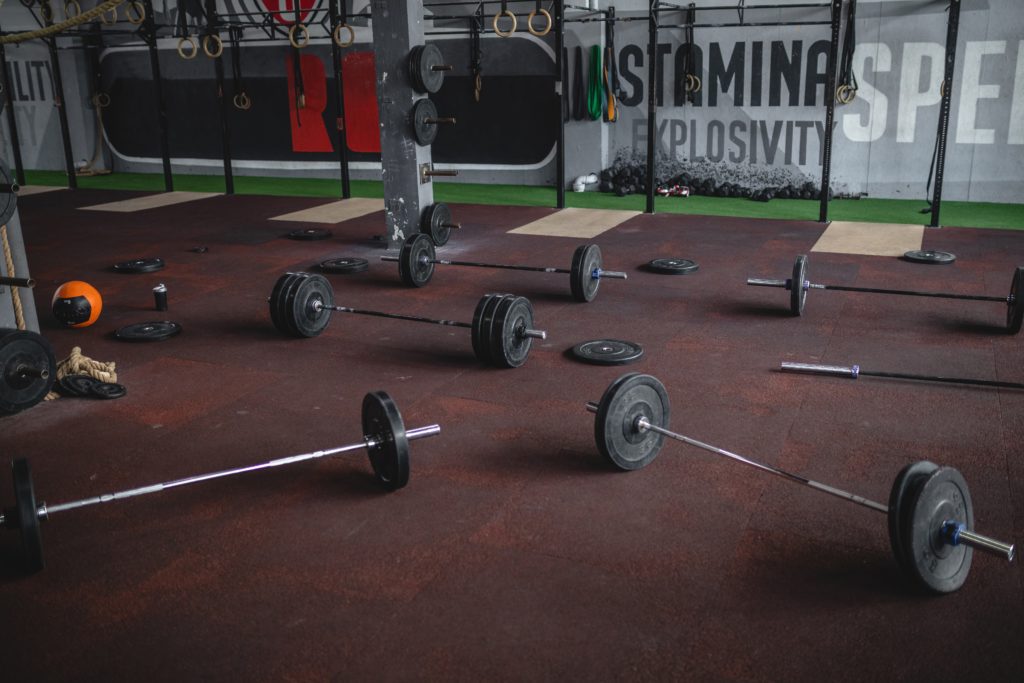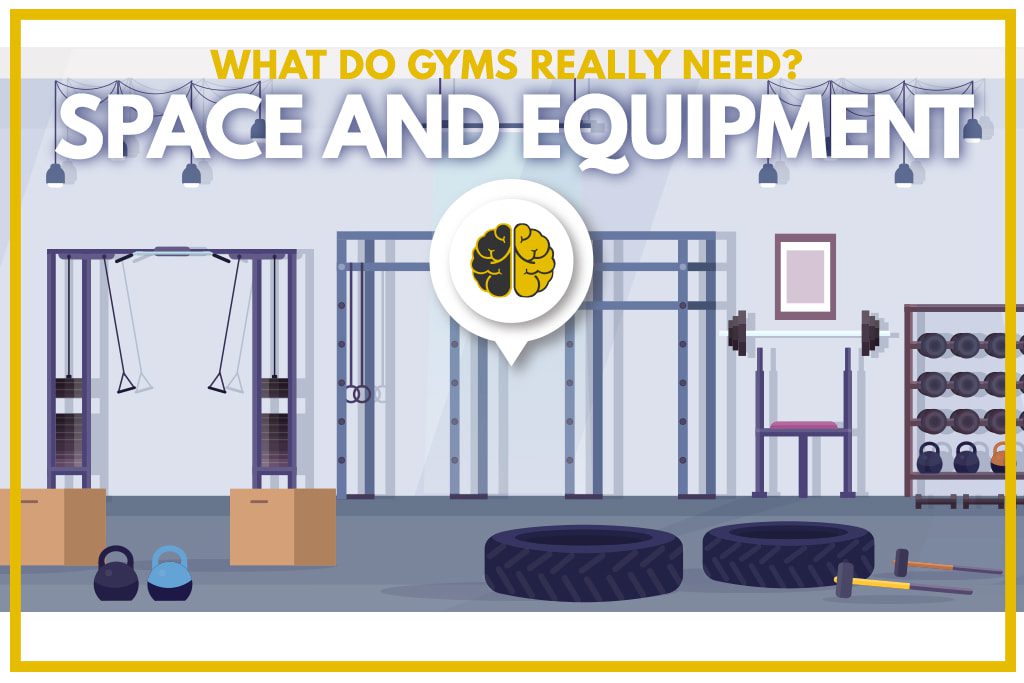“I just sold the broken kettlebell that I used to prop the back door open. For full retail price.” —Ed, owner of a fitness equipment franchise, May 2020
COVID was a forcing function. It was also an opportunity.
Many of us rented space that was too large and ate up any profit we might have made from coaching. I’m certainly guilty of this one: buying equipment that quickly became an anchor around my neck. You can probably still make out my torso shape on the reverse hyper machine in my gym—if you wipe away the dust.
Forget the myths that made us buy too big and too much. Here’s what we really need in a gym—and how to get out of our previous mistakes
Consider These Things First
Know What You’re Selling
In the PT studio, I knew that I was selling fitness. But in the CrossFit box, I thought I was selling CrossFit.
Can you see the difference? It’s important to understand the difference between selling a benefit (fitness) and selling a feature (CrossFit, PT or nutrition coaching).
Know Who Your Clients Are
Know where they work. Know what they do after dinner. Know if they drive a car or take a train.
Know What Those Clients Need to Be Successful
Successful professionals need appointments and classes around their workday (usually before their workday starts). They need showers. They need parking. They need to be able to get to their workplace on time. They need to be able to clear their heads while they’re with me. They might not need cheap rates, 60-minute classes or AirBikes.
Know What Tools You Need to Get Them There
You’ll need a barbell and a box. Something to hang from. Maybe some space to sprint. You’ll need a way to measure their progress, a way to bill their bank account every month, a way to schedule appointments, and a system to grow your business. You don’t need 10,000 square feet, $50,000 in equipment and a $5,000 website. People are attracted to results, not gear.
Know What You’re Actually Selling
You sell coaching. Big chain gyms sell access. Knowing the difference is really important.
Know How to Scale up, One Person at a Time
You can read about that here.

Choosing a Location for Your Gym
Figure out Where Your Ideal Clients Live and Work
Choose a location that’s convenient for them—either right next to work (people can’t go far on their lunch breaks) or on their way to/from work. If you’re going to have a large personal training and nutrition component to your business, choose a location closer to their homes. PT schedules are generally more flexible than class times.
If you plan to run large corporate challenges, choose a location closer to office buildings. If most of your potential clients commute in a car, you’ll need more parking. But don’t guess: Let your future clients determine what you actually need.
Then go sit on a park bench in those neighborhoods. Track the peak traffic. When do people generally leave for work? When do they come home? What do they do on their lunch breaks? The answers will determine your first appointment and class times.
Finally, consider how often your clients will need to come to your gym each week. Will they prefer to do some of their workouts on their own or at home? Have you built that into your model?
Pick a Location With Noise-Friendly Neighbors
The No. 1 lease problem affiliates have isn’t price; it’s noise complaints.
Pick a Location With Some Private Space Included
You need an office for nutrition coaching and consultations. You probably also need a private area for doing 1:1 training and a larger area for groups.
Buy Enough Gear to Train Four People at a Time
Forget the calculations about square footage per client that equipment sellers put on their site. They want you to rent a larger space so you can fill it with equipment. But at startup, your goal is to get to profitability as quickly as possible, not to build an equipment showroom. Great coaches can get their clients results with little equipment—or even no equipment.
Sign the Shortest-Term Lease on the Smallest Space Possible
You’ll eventually need more room, but not yet. Don’t try to eat the elephant in one bite. You’ll choke.
Want to read the top mistakes people make when choosing a space? Click here.
Bad Location? How to Get Out of It
Even though many people are skipping out on their lease payments and available subleased space across the U.S. is up 21 percent, most landlords are open to conversations about downsizing, term extension or financing your lease payment. I know because I am one.
The key is to have that conversation now before real estate prices drop and your lease becomes more valuable.
I’m bringing author and former FBI hostage negotiator Chris Voss to the Two-Brain Summit to talk about rent negotiation and other hard topics in September.
Start the conversation with your landlord in person.
Start with “thanks for being open to this conversation.”
Lay out the challenges you’re facing. Ask, “How would you approach this problem if you were in my shoes?”
Then present your plan: Anchor the conversation with, “I’d like to propose extending my lease by three months in exchange for rent abatement for the next three months.” If you go into this conversation without a plan, you’ll leave without a plan because the landlord already has a plan: You keep paying rent on time.
Finally, keep this in mind: They don’t have to make a single concession. You signed a contract. Any help they provide is really charity. You don’t have much bargaining power here.
But as a landlord, I gave my tenants this option: Extend your lease for six months and I’ll give you the next four months for free. Every tenant took me up on the option, and they were all grateful for some grace in a challenging time.

What Equipment Does a Gym Need?
Many people see lack of equipment as a constraint for the coach. But it’s sometimes a positive constraint: Less equipment makes a new gym owner better at programming, better at selling workouts to clients and better at reaching breakeven quickly.
The temptation to “use everything” might be subconscious but will definitely skew your programming. And every new piece of equipment has a ratchet effect: No one cares about AirBikes until you buy one. Then everyone says, “We don’t have enough AirBikes!”
When I opened in 2005, no one had 15-kg barbells. I resisted buying any until 2010, when I bought three. I immediately had to buy seven more because those who wanted a 15-kg barbell and didn’t get one felt their experience was somehow compromised—even though there wasn’t a problem a week before.
Some general tips:
Start With the Results You Want to Achieve
Then write the programming for your first three months. Then write your on-ramp program to prepare people for your class programming. Finally, buy the equipment needed for your on-ramp programming and nothing else. Like your clients, you’ll scale up in complexity as you go—or maybe not.
Tie Every New Piece of Equipment to ROI
Will two new rowers really make you more money? Are people quitting because you don’t have enough? These are the two criteria for buying equipment.
Equipment will never attract a new client to your group classes. But if people are waiting around for their turn, you should start planning to buy more. And if purchasing equipment will allow you to sell a different service—at a different price—then it might be a good investment.
Finance Equipment Over the Longest Term Possible
At startup especially, it’s more important to free up your cash flow than to pay down debt quickly. You can always pay it off early if you have the cash, but don’t martyr yourself to save a few bucks on interest.
The Best Equipment Isn’t Always the Barbell
The InBody makes us more money than our rig because it shows the clients what they care about: their progress.
Too Much Equipment? What to Do About It
If you’re downsizing or selling or moving online, or even just trying to raise some cash, this is the best opportunity you’ll ever have to sell equipment.
Rogue has a waiting list. Other fitness suppliers are struggling to get gear to sell. Demand for in-home equipment has skyrocketed while supply has dried up.
“If you do have excess ‘glory gear,’ now is the time to sell. We sold some gym mats for more than we paid for them years ago, and we sold other used gear at retail, minus tax. And 10-year-old med balls for 33 cents on the dollar,” one owner reported.
Fitness gear rarely “wears out,” so it still often holds value to your client. Start there. If you loaned out your equipment during COVID, send your clients a message with the price to keep it.
Next, turn to the other gyms in town and ask if they’d like to buy it. Usually, the resale value of fitness equipment is around 30 cents per $1 new, but that’s only because there’s unlimited supply. Right now, that equipment is worth a lot more because gyms need it to serve more clients. You’re not taking advantage of anyone; you’re simply exchanging your needs (less equipment) to satisfy their needs (more equipment).
It’s never too late to get out of a mistake with your location or your equipment. Mistakes aren’t fatal. But there’s never been a better time to ask “do I really need this reverse hyperextension?” and undo your sunk costs.
How Chris Cooper Would Start a New Gym Today
If I were starting today, I’d launch with zero rented space. I’d start online and stay there until I reached 20 clients.
Then I’d scale to train four people at a time in a very small space (Greg Amundson, one of the original athletes at the first CrossFit gym, has only 800 square feet).
I’d buy equipment to deliver my programming instead of believing that “glory gear” would attract more clients.
And I’d get profitable a lot sooner.
Other Media in This Series
“What Do Gyms Really Need?”
“What Do Gyms Really Need?—Services and Schedules”
“What Do Gyms Really Need?—Staff”

